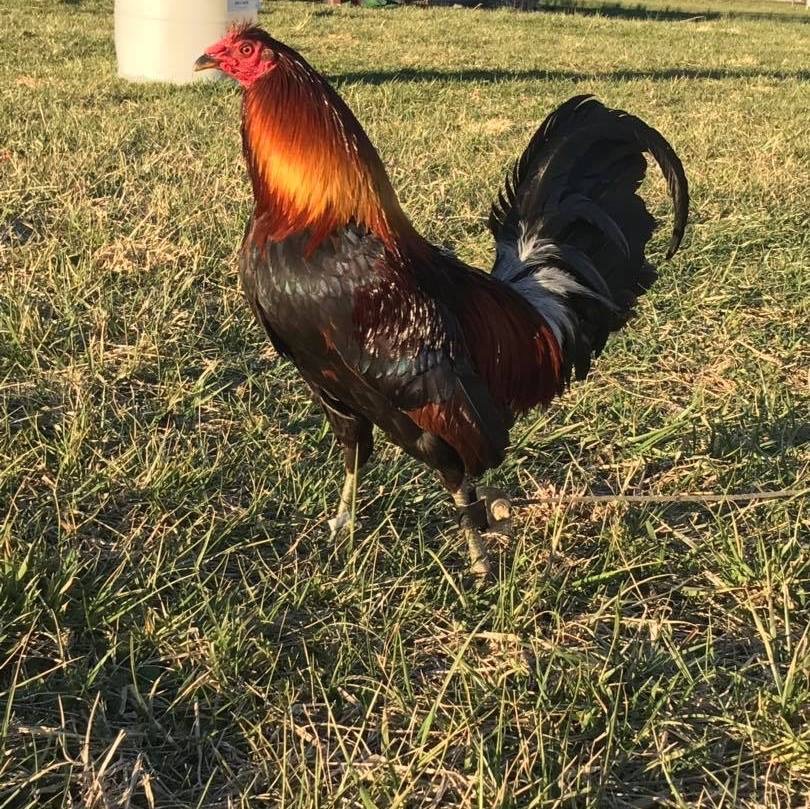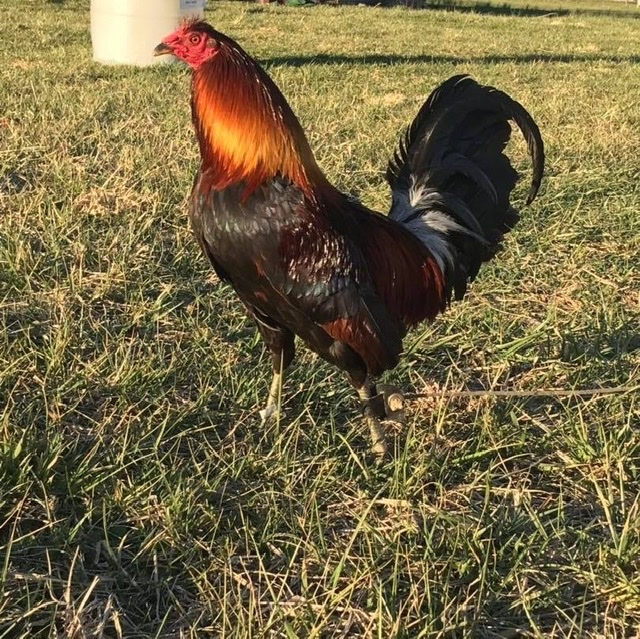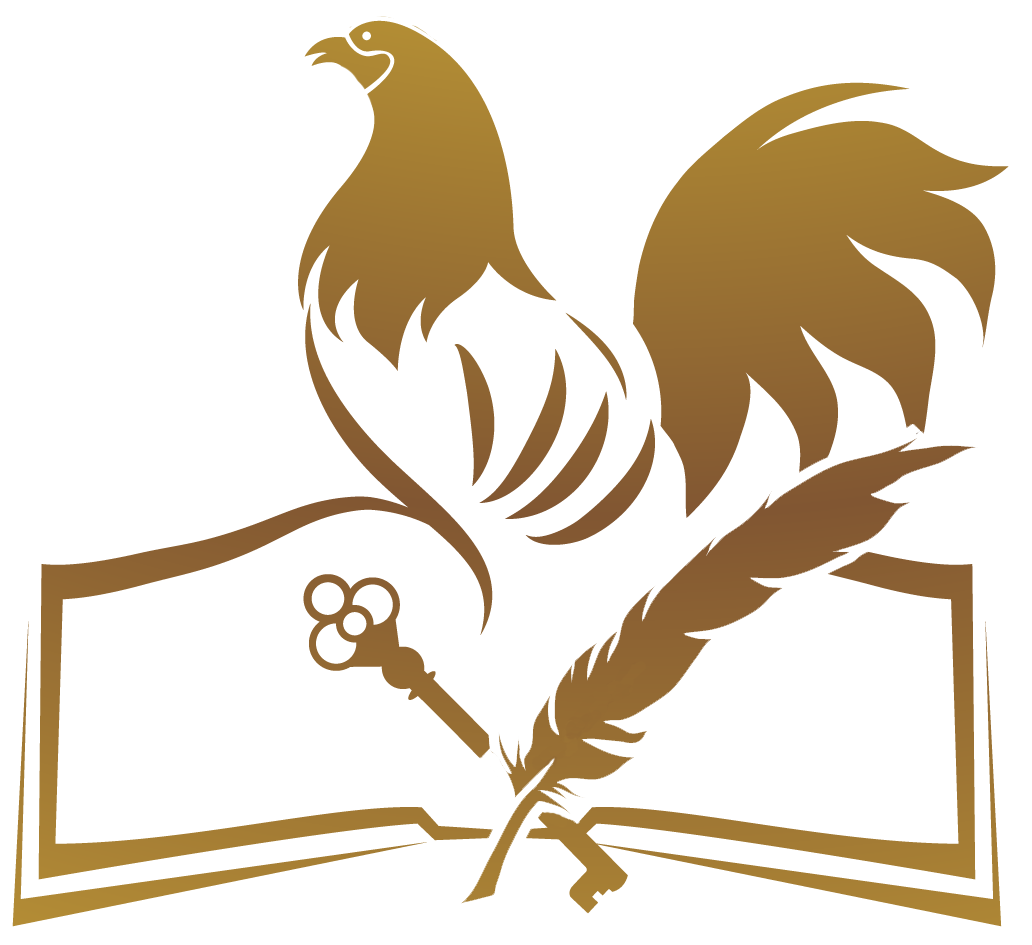Home › Forums › Breeding and Selection › Possible Outcomes
-
AuthorPosts
-
-
June 18, 2020 at 8:04 AM #13006
AnonymousInactive@A few years ago I was gifted a “Pure” Boles Asil hen from a friend. I was very reluctant to do any breeding with her at first, but she eventually won me over. Her temperament and gentle nature were something I had never experienced in gamefowl. Of course she had that round football body, a pea comb, and yellow legs. But she also had other things that an Asil normally don’t have, like a small head, a dark red eye, and a medium tail. After much thought and consideration, I decided to breed her with one of my Blueface cocks to make show fowl. A small, straight combed, and green legged Hatch type fowl. My father and I have had these for almost a decade. Proven as a family would be an understatement for these Blueface chickens. The offspring of this family turned out to be phenomenal, in my eyes. The old Asil hen hatched a total of 6 chicks that setting. 3 stags. 3 pullets. The stags pulled the yellow legs from their mother. The pullets pulled the green legs from their father. All of the offspring where Pea combed. This shows me that the old Asil hen was indeed breeding true. I gifted 2 of those pairs to friends to experiment with, Leaving myself with the parents and a set of the 1/2 and 1/2 offspring. I had liked the offspring so much that I had planned on Line breeding the stag back to his mother. Of course if something can go wrong, it usually does. The old Asil hen was taken out of the equation by a varmint. This leaves me with the brother/ sister who are 1/2 and 1/2. I bred this pair together this year and was wondering what I should be expecting from there offspring. I am hoping to eventually recreate the Asil hen and make my own line of Asil’s.
-
June 22, 2020 at 6:02 PM #13052
Hello Teddy,
If you attempt to create a family from this brother and sister, being that they are BlueFace and Aseel, your next generation will be, more or less, mongrels. If you want to lean towards the Aseel breed, or make your own strain, which is very possible, You just need to select the traits that are desirable to you. Just know they will never be Blueface or Aseel.
You will also have a wide range of traits, both dominant and recessive to consider. But know, it’s the polygenic traits that you will want to maintain and intensify.
To accomplish this task, I would follow the Founders Program, it is designed to create a family and strain from hybrid crossing and mongrels.
-
June 22, 2020 at 6:15 PM #13008
AnonymousInactive@
-
June 22, 2020 at 6:15 PM #13007
AnonymousInactive@ Pure Blueface Cock
Pure Blueface Cock -
June 23, 2020 at 6:29 AM #13061
AnonymousInactive@Could you help me prepare a Punnett Square for the brother/sister mating? Specifically for leg color and comb type. Both are recessive for straight comb, but are pea combed. Will the offspring be of both comb types? Is there a chance that some will not carry the recessive trait for Straight comb?
-
June 24, 2020 at 7:38 PM #13065
Hey Teddy,
would you be interested in doing a coaching call with me on Zoom?
that way I can work with you and show you how to do a proper punnetts square.
-
-
June 25, 2020 at 6:25 AM #13066
AnonymousInactive@Absolutely…
-
July 24, 2021 at 10:41 PM #14099
AnonymousInactive@I started a project crossing a Self Blue Ameraucana hen with a Svathona rooster. The splits were all black with fibro characteristics. I did two different tests, sibling to sibling and split back to a Self Blue Ameraucana rooster. The goal is a lavender feathered bird that lays a blue egg. I only was able to raise a rooster from the split to split cross, he had more Svathona type, with a lot of ticking. Breeding him back to a split gave me a nice solid lavender with a good feather quality. The split back to the Self Blue gave me more lavender birds with Ameraucana body type, muffs and beards. I was able to raise 3 pullets, 2 lay blue and 1 lays green, but the feather quality was very bad. the second hatch gave me 40% lavender, 45% black with a mix of fibro skin and white, with 1 or 2 black birds with tan heads (F3) level. These tan headed birds are growing out to be black and white, lavender and white, or birds with a more jungle fowl coloring. I asked about my rooster, the self blue. I am not understanding where this white or jungle foal coloring is coming from unless it is from the Self Blue rooster. After further investigation I was informed the breeder of the rooster also bred Silver and Isabel’s so only conclusion is the rooster had a recessive gene that was causing the color issues. Since I would like to sell hatching eggs I was thinking the best thing I can do is scrap this whole line and start again with hens from a different line and hope there is no recessive gene. I have a pure breed Svathona rooster and I am willing to start again. Original I set this up to have a second unrelated line but colors are going all over the place on my F3’s. Is this the best way to handle this?
-
July 29, 2021 at 1:35 PM #14107
Hello Christina,
There is a lot to digest there. We should do a coaching call soon to discuss where you are at this moment, and where we plan to go.
Send me any pictures we will need to discuss, to my email address breedersacademy@gmail.com
Kenny Troiano
-
-
-
AuthorPosts
- You must be logged in to reply to this topic.

